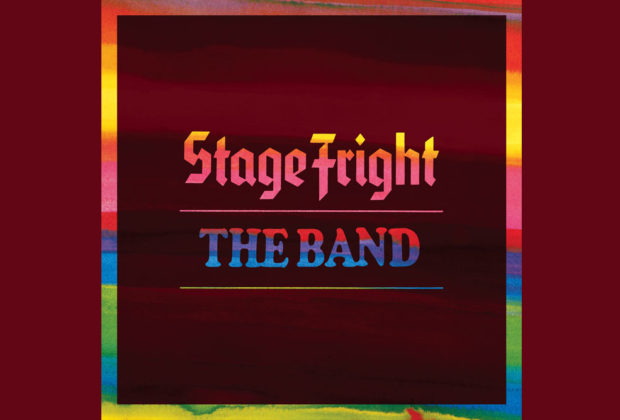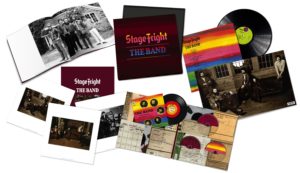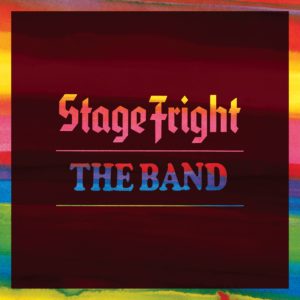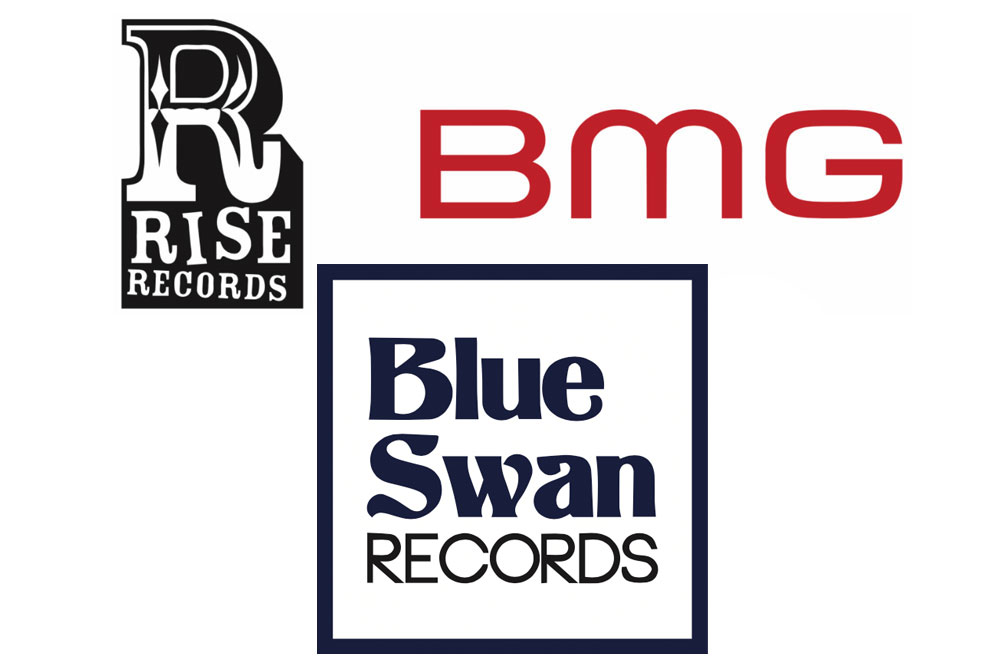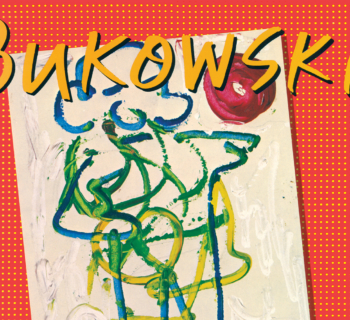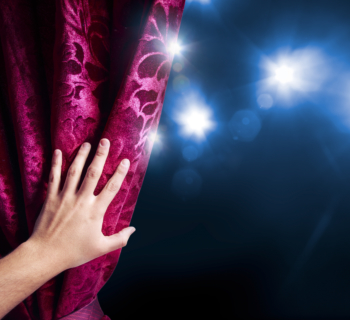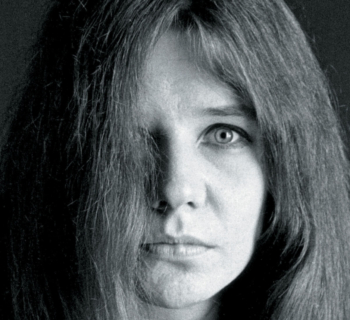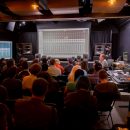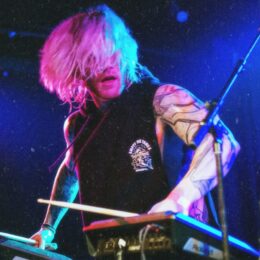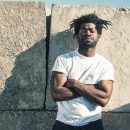By the time The Band was ready to record their third album, Stage Fright, in 1970, they were riding high from having released back-to-back albums that solidified them as one of the most exciting and revolutionary groups of the late 1960s. Seemingly coming from nowhere and everywhere in ‘68, their landmark debut album, Music From Big Pink, drew from the American roots music panoply of country, blues, R&B, gospel, soul, rockabilly, the honking tenor sax tradition, hymns, funeral dirges, brass band music, folk, and rock ‘n’ roll to forge a timeless new style that forever changed the course of popular music. When they released their seminal eponymous second album the following year, “The Brown Album” as it would be called, not much more was known about the reclusive group.
The Band, made up of four Canadians and one American, was still shrouded in mystery, allowing for listeners and the music press to let their imaginations run wild about who these men were and what this music was that sounded unlike anything else happening at the close of the psychedelic ‘60s. Dressed like 19th century fire-and-brimstone preachers and singing rustic, sepia-toned songs about America and the deep south, The Band – Garth Hudson (keyboards, piano, horn), Levon Helm (drums, vocals, mandolin), Richard Manuel (keyboards, vocals, drums), Rick Danko (bass, vocals, fiddle) and Robbie Robertson (guitar, piano, vocals) – was an enigma, unlike any group that came before or after.
They resided, along with neighbor and collaborator Bob Dylan, in the rural artist community of Woodstock, New York home base, years before the sleepy town became a cultural flashpoint and shorthand for the emerging counterculture in the wake of the massive Woodstock Music & Arts Festival, held 40 miles southwest in Bethel, NY.
As a result of the Woodstock event in ’69, the small town became a Bohemian mecca of sorts and was overrun by the hordes of people it was now attracting. As a peace offering to their community, The Band rented out the Woodstock Playhouse to host a concert where they’d debut their new batch of songs they had been workshopping to their neighbors. Fearing that the show would only attract more outsiders and make matters worse it was turned down by the townsfolk.
As a result, The Band ended up recording their next album on the playhouse stage, without an audience. Enter: Stage Fright. The Woodstock Playhouse recording sessions were done in an environment created and developed by their cunning and powerful manager, Albert Grossman.
“I was doing PR in January 1963 and hustled Grossman at the Cumberland Hotel [London],” recollected record producer and author Andrew Loog Oldham in a 2017 interview.
“His client Bob Dylan was in London to play a background music role in a BBC2 television drama, Madhouse on Castle Street. Grossman managed Peter, Paul & Mary.
“The twenty minutes I spent in the room with Grossman and Dylan that day were life-giving. I knew where I wanted to be. That conspiracy. That marriage. The finishing of sentences of the other. This was a totally different floor of life than I’d ever been on. And I wanted it. It’s very good that I already had that gas in my car when I met the Rolling Stones in 1963.
“Grossman and Dylan were very happy together. They acted like they knew something we didn’t know yet. There was this conspiratorial thing that was so powerful; you knew it had to work. I wanted it. And eventually I got it with the Rolling Stones.
“In 1966, when I was managing and producing the Stones, we worked with booking agent Tito Burns, who also worked with Grossman and Dylan on their English tours in 1965 and ’66. The Hawks, soon to be The Band, were playing with Dylan in ’66.
“Albert Grossman was the gatekeeper to a world of talent he had personally cultivated out of a belief in genius and profitability, both his own and that of his clients.”
Released on August 17, 1970, Stage Fright features two of The Band’s best-known songs, “The Shape I’m In” and the title track, both of which displayed inspired lead vocal performances by Manuel and Danko, respectively and became staples in the group’s live shows.
Recorded over 12 days on the stage of the Woodstock Playhouse, the album was self-produced by The Band for the first time and engineered and mixed by Todd Rundgren with additional mixing by Glyn Johns. Coming off the heels of the band’s monumental debut and sophomore records, Stage Fright cemented The Band as one of the most exciting and important musical acts of the ‘60s and ‘70s.
Music critic Robert Hilburn of The Los Angeles Times, wrote, “Like the first two albums, the new one features a staggering display of musical prowess – superb instrumentation, precise vocals and rich, timeless lyrics,” adding, “At least five of the songs, including ‘The Rumor,’ ‘Daniel and the Sacred Harp, ‘The Shape I’m In’ and ‘Time to Kill’ rank comfortably alongside ‘The Weight,’ The Night They Drove Old Dixie Down’ and a few others as the best things the group has ever done.” Stage Fright peaked at #5 on Billboard, surpassing The Band’s first two albums, and went gold.
Stage Fright ushered The Band into the ’70s. Danko sang the title track, a reflection on the stardom they had achieved, and “The Shape I’m In” showcased Manuel’s vocals, both FM radio favorites as album rock burgeoned into a radio rotation format.
On February 12, Capitol/UMe will celebrate the 50th anniversary of The Band’s classic third album, Stage Fright, with a suite of newly remixed, remastered and expanded 50th Anniversary Edition packages, including a multi-format Super Deluxe 2CD/Blu-ray/1LP/7-inch vinyl box set photo booklet; digital, 2CD, 180-gram black vinyl, and limited edition 180-gram color vinyl packages. All the Anniversary Edition releases were overseen by principal songwriter Robbie Robertson and boast a new stereo mix by Bob Clearmountain from the original multi-track masters. For the first time, the album is being presented in the originally planned song order.
There also alternate versions of “Strawberry Wine” and “Sleeping;” and seven unearthed field recordings, Calgary Hotel Recordings, 1970, a fun and loose, impromptu late night hotel jam session between Robertson, Danko and Manuel of several Stage Fright songs recorded while the album was in the mixing stage.
Exclusively for the box set, Clearmountain has also created a new 5.1 surround mix and a hi-res stereo mix of the album, bonus tracks and the live show, presented on Blu-ray. All the new audio mixes have been mastered by Bob Ludwig at Gateway Mastering.
The set also includes an exclusive reproduction of the Spanish pressing of The Band’s 1971 7-inch vinyl single for “Time To Kill” b/w “The Shape I’m In” in their new stereo mixes and a photo booklet with new notes by Robbie Robertson and touring photographer John Scheele, who recorded the Calgary Hotel Recordings; plus a reprinting of the original Los Angeles Times album review by critic Robert Hilburn; three classic photo lithographs; and a wealth of photographs from Scheele and several other photographers.
As with the acclaimed 50th anniversary collections for Music From Big Pink and the self-titled record, Clearmountain and Robertson’s approach to remixing the beloved album was done with the utmost care and respect for the music and what The Band represents.
“Doing new mixes on these songs with Bob Clearmountain has been a gift and special opportunity,” Robertson writes in the new liner notes.
“Glyn Johns and Todd [Rundgren] did a terrific job on the original mixes in England while The Band was on the Festival Express train tour across Canada with Janis Joplin and the Grateful Dead. We had always been part of the mixing process before, which left something on this album feeling a little unfinished. Clearmountain has taken this music and given it the sonic lift it deserves. The album has become a whole new listening experience with the original song order and the depth of these mixes.”
The result is a new mix that allows listeners to hear these timeless songs clearer than ever before. “There may be some purists that prefer ‘the way it was,’ and of course that’s always readily available,” adds Robertson. “I’m enjoying this new version, this story, this musical journey. It feels like a fulfillment and I know my brothers in The Band would definitely agree.”
In June 1970, The Band returned to Woodstock to record their third album, Stage Fright. The manifold changes taking place within the group found expression in Robbie’s latest compositions. But the local constabulary, in cahoots with the town elders, put the kibosh on that, fearful of the hippie hordes in search of their next music festival fix.
The Stage Fright album itself was recorded under somewhat chastened circumstances. Instead of going live, The Band buckled down for an intense private two-week session at the Playhouse, accompanied only by engineer Todd Rundgren (whom Robbie had met earlier while collaborating on a Jesse Winchester recording) and their longtime associate John Simon.
“At the Woodstock Playhouse, we were able to set up The Band onstage without the traditional solo booths of a typical recording studio,” William Scheele, equipment/stage manager for The Band reminisced to me in a 2017 interview.
“They preferred a circular setup, to be able to see and play off of each other. It was a very visual method, sometimes prompted by a wink or a grin. I loved that. I began to see how they all interacted throughout their creative process.”
In a 2017 interview I conducted with Robbie Robertson for Record Collector News magazine he mentioned a recording session around 1987 on his debut solo album that had location dependent recording roots which started with Stage Fright.
“I went to Dublin, Ireland, to do some experimenting with U2…They were recording in the living room of Adam [Clayton]’s house, and when I walked in, the producer Daniel Lanois, Edge, and Bono said ‘Does this feel familiar?’ And I didn’t quite understand what they meant. What they were saying was: ‘You are the guys who started this whole thing.’ When we [later] did Stage Fright at the Woodstock Playhouse, we brought the equipment into that room. But it’s very common today.”
In a 1976 interview I did with Robertson for the March ’76 issue of Crawdaddy magazine, I asked him about songwriting, specifically his employment of third person observations and autobiographical aspects coming out in interpretive snips and snatches in the Band’s recordings.
Robbie explained this specific songwriting function on display in Stage Fright and the earlier Band catalog.
“I just think it’s part of storytelling,” Robertson reinforced. “It isn’t anything to put the songs in the third person. Sometimes when you get that little detachment you can write about more.
“I’m Canadian and I wrote the song about the Civil War [‘The Night They Drove Old Dixie Down’]. I didn’t know the story and it fascinated me. Everyone else took it for granted-they read about it in history class. When it’s strictly about yourself you’re ‘not allowed to deal with fiction.’ So it’s something that opens the gates a little bit.”
The box set, CD and digital configurations feature a bevy of unreleased recordings, including Live at the Royal Albert Hall, June 1971, a thrilling full concert in London captured in the midst of their European tour as the band was at the top of its game.
Under the guidance of Albert Grossman in the spring of 1971, The Band set off to Europe where they hadn’t played since their tumultuous tour with Bob Dylan in 1966, where they were booed every night as the folk rock purists felt betrayed by Dylan who had gone electric, backed by The Hawks who would soon after become The Band. Not having played there in five years, the guys were understandably weary and didn’t know what to expect, but instead of boos they received a rapturous response at their first concert in Hamburg, Germany and would go on to play for one enthusiastic crowd after another.
“Each member of The Band was on a musical high. Everybody playing and singing at the top of their game. Each night, from Amsterdam to Paris to Copenhagen, the spirit kept rising,” remarks Robertson. When it came to the band’s concert at London’s Royal Albert Hall, they wanted to document it so EMI taped it on a 4-track machine.
For the first time ever, this concert recording is being released as Live At The Royal Albert Hall, 1971, an exhilarating 20-song set that captures the band firing on all cylinders and delivering rousing performances of songs from their then-recently released third album alongside their most popular tracks from Music From Big Pink and “The Brown Album” such as “The Weight,” “King Harvest (Has Surely Come),” “Up On Cripple Creek,” “The Night They Drove Old Dixie Down,” “Across The Great Divide,” “Chest Fever,” and inspired covers of Dylan’s “I Shall Be Released” and the Stevie Wonder-penned, Four Tops hit, “Loving You Is Sweeter Than Ever.” With the help of Clearmountain, these recordings have been restored nearly five decades later, allowing listeners to experience what Robertson call “One of the greatest live concerts The Band ever played.”
Noted writer and author Richard Williams was in attendance at this landmark recital.
“To say that London was ready for the Band in the summer of 1971 would be a severe understatement. The Royal Albert Hall was packed with familiar faces, from Jimmy Page to Richard Thompson, ready for what felt like the event of the year. Even to those already thoroughly familiar with their work, the two concerts were a revelation. The sound was perfect, the playing and singing even more so as they shrank the famous but notoriously difficult 5,000-seater concert hall to the size and intimacy of a juke joint. To see them swapping instruments — Levon picking up a mandolin, Richard settling behind the drums — as easily as they swapped the lead vocals was to be drawn into a world where making music seemed to come as naturally as breathing. From rock gods to the humblest fan, we walked out laughing in amazement, sharing the joy in having witnessed something that defined new levels and standards.”
In 2017 my brother Kenneth and I wrote the book The Story Of The Band From Big Pink To The Last Waltz, a definitive study of the colorful musical outfit, implementing numerous interviews, color photos and memorabilia.
For the volume I spoke with drummer/percussionist Jim Keltner about The Band and drummer/vocalist Levon Helm.
Keltner was present in 1970 at The Hollywood Bowl when The Band and Miles Davis shared a booking at the venue.
“I loved their grooves. Levon tuned those wooden drums real low; he had a sound and a touch. Because he was a singer, it only enhanced his drum fills, where to place an accent. And he really locked in with Danko’s bass.
“If you are a singing drummer, you have a great advantage. I’ve always played to the vocal, and I found out that Ringo and countless other drummers, I’m sure, do as well. Levon was able to push or pull the groove any way he felt it by singing and playing at the same time. The way he felt space was magnificent. His biggest influences were the blues bands he heard as a young man, the geniuses from the Delta and around where he was from.”
Whereas the electrifying Live at the Royal Albert Hall, June 1971 concert showcases The Band playing as good as they ever did, The Calgary Hotel Recordings, 1970 offer a glimpse into a different kind of performance, the kind of fun, spur-of-the-moment jam sessions that were bound to happen whenever the guys were together in a hotel room or backstage on tour.
As Robertson started to run through some of The Band’s new songs recently recorded for Stage Fright, photographer John Scheele, who was traveling with the group on the Festival Express, hit record on his portable cassette recorder and captured the spontaneous performance late at night on July 3, 1970 in Calgary, the last stop of the legendary tour.
The field recordings, which feature Robertson on guitar and vocals with Danko harmonizing and playing rhythm and Manuel joining in on vocals and harmonica, are a fascinating document that lets fans hear the friends letting loose and having a good time together doing what they loved to do.
For the 50th Anniversary collection, the sequence has been changed to present Stage Fright with the originally planned song order.
“On the album, we used a different sequence to feature and encourage Richard and Levon’s songwriting participation,” Robertson reveals. “Over time, I pined for our first song order, because it pulls you right into the Stage Fright scenario.”
Stage Fright (50th Anniversary Edition) Tracklisting
CD1; Digital
1. The W.S. Walcott Medicine Show
2. The Shape I’m In
3. Daniel And The Sacred Harp
4. Stage Fright
5. The Rumor
6. Time To Kill
7. Just Another Whistle Stop
8. All La Glory
9. Strawberry Wine
10. Sleeping
Bonus Tracks
11. Strawberry Wine (Alternate Mix) *
12. Sleeping (Alternate Mix) *
Calgary Hotel Room Recordings, 1970 *
13. Get Up Jake (#1) *
14. Get Up Jake (#2) *
15. The W.S. Walcott Medicine Show *
16. Rockin’ Pneumonia And The Boogie Woogie Flu *
17. Calgary Blues *
18. Before You Accuse Me *
19. Mojo Hannah *
* Previously unreleased
CD2; Digital
Live At Royal Albert Hall, June 1971
(Previously Unreleased)
1. The Shape I’m In
2. Time To Kill
3. The Weight
4. King Harvest (Has Surely Come)
5. Strawberry Wine
6. Rockin’ Chair
7. Look Out Cleveland
8. I Shall Be Released
9. Stage Fright
10. Up On Cripple Creek
11. The W.S. Walcott Medicine Show
12. We Can Talk
13. Loving You Is Sweeter Than Ever
14. The Night They Drove Old Dixie Down
15. Across the Great Divide
16. The Unfaithful Servant
17. Don’t Do It
18. The Genetic Method
19. Chest Fever
20. Rag Mama Rag
Blu-ray
Stereo and 5.1 Surround
High Resolution Audio: 96 kHz/24 bit
DISC 1
1. The W.S. Walcott Medicine Show
2. The Shape I’m In
3. Daniel And The Sacred Harp
4. Stage Fright
5. The Rumor
6. Time To Kill
7. Just Another Whistle Stop
8. All La Glory
9. Strawberry Wine
10. Sleeping
Bonus Tracks
11. Strawberry Wine (Alternate Mix) *
12. Sleeping (Alternate Mix) *
* Previously unreleased
DISC 2
Live At Royal Albert Hall, June 1971
(Previously Unreleased)
1. The Shape I’m In
2. Time To Kill
3. The Weight
4. King Harvest (Has Surely Come)
5. Strawberry Wine
6. Rockin’ Chair
7. Look Out Cleveland
8. I Shall Be Released
9. Stage Fright
10. Up On Cripple Creek
11. The W.S. Walcott Medicine Show
12. We Can Talk
13. Loving You Is Sweeter Than Ever
14. The Night They Drove Old Dixie Down
15. Across the Great Divide
16. The Unfaithful Servant
17. Don’t Do It
18. The Genetic Method
19. Chest Fever
20. Rag Mama Rag
1LP (33 1/3 RPM)
180g black vinyl (included in the box set and available individually); ltd. edition 180g multi-colored vinyl (available individually)
Side One
1. The W.S. Walcott Medicine Show
2. The Shape I’m In
3. Daniel And The Sacred Harp
4. Stage Fright
5. The Rumor
Side Two
1. Time To Kill
2. Just Another Whistle Stop
3. All La Glory
4. Strawberry Wine
5. Sleeping
“Time To Kill” (Original 1971 7” Capitol Single, Spanish Pressing)
Fifty years on, lifelong fans and those just discovering The Band can experience the album Stage Fright in a whole new way, sounding better than ever, or for the first time.
I asked two Band scholars to comment on the 50th anniversary retail release.
“Only now can we realize that Stage Fright is — wait for it — a concept album,” suggests poet and writer Dr. James Cushing, “with an implied narrative!
Side one examines the anxiety of PERFORMANCE — the medicine show, the shape the star is in, a hymn he performs, his stage fright, and the rumors surrounding it all. Side two examines the RETREAT from anxiety as the performer withdraws into private life, with time to kill between whistle stops, contemplating the allegory / all-la-glory, drinking some strawberry wine, falling asleep.
“The restored order makes what had been a randomly ordered collection of ten songs into a coherent statement about how it felt to be in The Band in 1970, maybe even to be out performing in America in 1970, the year of Kent State. I know of no other instance in the whole of classic rock where the re-ordering of songs makes such a huge difference. For me, Stage Fright now joins the previous two Band albums in the masterpiece category; before, it was a coulda-been.”
“Listening to the re-jigged Stage Fright reinforces The Band’s place as one of the mightiest rock bands of all time,” summarizes musician and writer Michael Simmons.
“In addition to talent, their originality made them special and members of a very small club. Most human beings are sheep. The Band strayed from the flock and created great art.
“To expand on your pal Doc Cushing's points, the re-sequencing presents Stage Fright as a concept album about a rock band confronting the problems that come with fame and cashish. It’s revealing in ways group members rarely were in interactions with the press.”
Harvey Kubernik is the author of 19 books, including Canyon Of Dreams: The Magic And The Music Of Laurel Canyon and Turn Up The Radio! Rock, Pop and Roll In Los Angeles 1956-1972. Sterling/Barnes and Noble in 2018 published Harvey and Kenneth Kubernik’s The Story Of The Band: From Big Pink To The Last Waltz. For 2021 the duo has written a book on Jimi Hendrix for Sterling/Barnes and Noble.
Otherworld Cottage Industries in 2020 published Harvey’s book, Docs That Rock, Music That Matters, featuring interviews with D.A. Pennebaker, Chris Hegedus, Albert Maysles, Murray Lerner, Morgan Neville, Dr. James Cushing, Curtis Hanson, Michael Lindsay-Hogg, Andrew Loog Oldham, Dick Clark, Ray Manzarek, John Densmore, Robby Krieger, Travis Pike, Allan Arkush, and David Leaf, among others.
This century Kubernik wrote the liner note booklets to the CD re-releases of Carole King’s Tapestry, Allen Ginsberg’s Kaddish, Elvis Presley The ’68 Comeback Special and The Ramones’ End of the Century)
Kubernik’s writings are in several book anthologies, most notably The Rolling Stone Book Of The Beats and Drinking With Bukowski.
In November 2006, Harvey Kubernik was a speaker discussing audiotape preservation and archiving at special hearings called by The Library of Congress and held in Hollywood, California.
During 2020 Harvey Kubernik served as a Consultant on the 2-part documentary Laurel Canyon: A Place in Time directed by Alison Ellwood which debuted on the EPIX-TV channel. Kubernik is currently working on a documentary about Rock and Roll Hall of Fame member singer/songwriter Del Shannon.
This decade Harvey was filmed for the currently in-production documentary about former Hollywood landmark Gold Star Recording Studio and co-owner/engineer Stan Ross produced and directed by Brad Ross and Jonathan Rosenberg. Brian Wilson, Herb Alpert, Richie Furay, Darlene Love, Mike Curb, Chris Montez, Bill Medley, Don Randi, Hal Blaine, Shel Talmy, Don Peake, Kim Fowley, Johnny Echols, Gloria Jones, Carol Kaye, Marky Ramone, David Kessel and Steven Van Zandt have participated.
Kubernik was lensed as a screen interview subject for director/producer Neil Norman’s GNP Crescendo documentary, The Seeds: Pushin’ Too Hard. Jan Savage and Daryl Hooper of the Seeds participated along with Bruce Johnston of the Beach Boys, Iggy Pop, Kim Fowley, Jim Salzer, the Bangles, photographer Ed Caraeff, Mark Weitz of the Strawberry Alarm Clock and Love’s Johnny Echols. Miss Pamela Des Barres supplied the narration. The documentary is scheduled for a debut airing on television during 2021.

